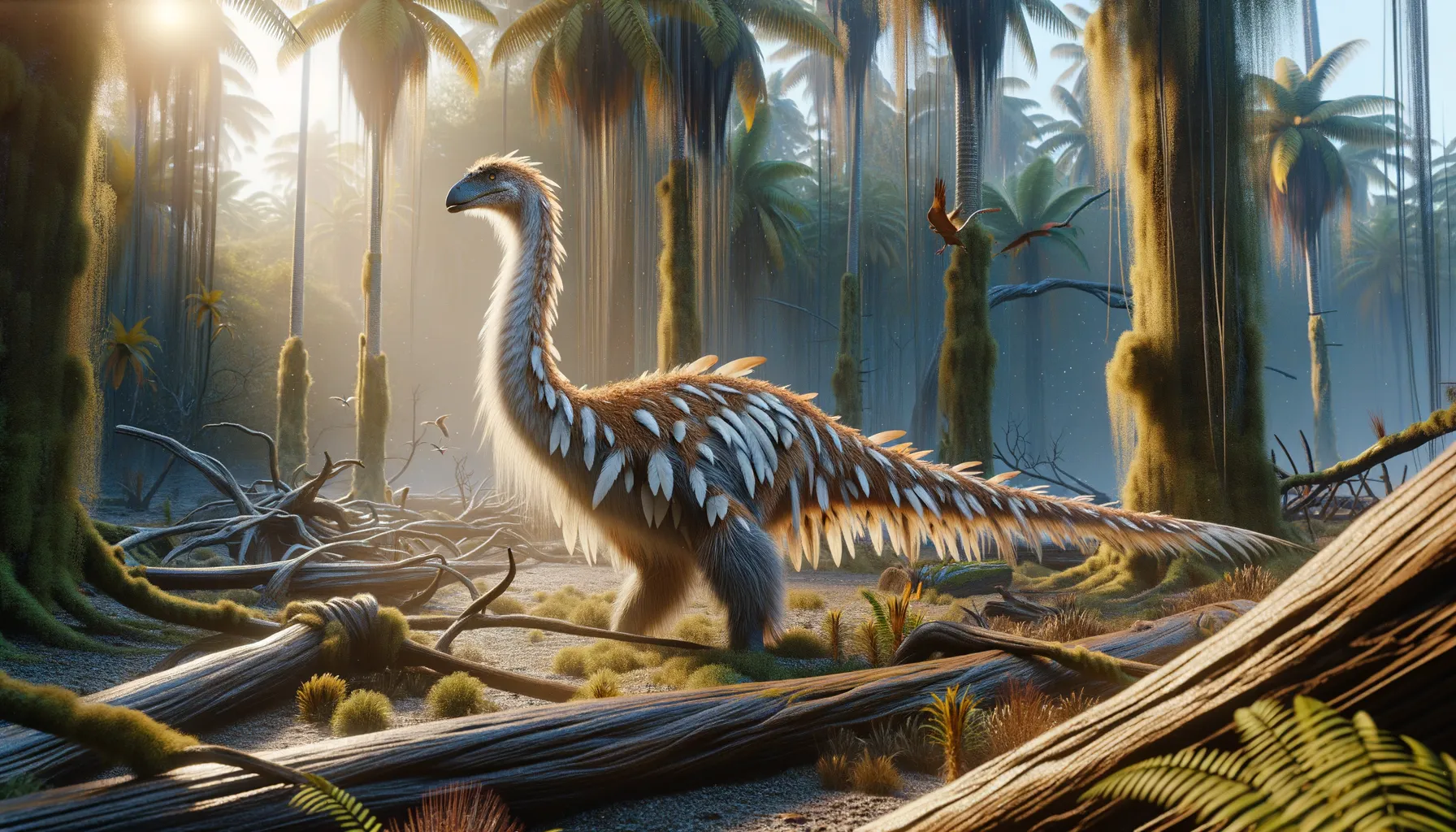
Citipati
Feathered guardian of ancient nests.
Period
Cretaceous
Length
Roughly 6.5 feet long.
Height
About 3 feet tall at the hips.
Weight
Approximately 33-88 pounds.
Citipati was a fascinating dinosaur that lived during the Late Cretaceous period. Known for its close relationship to birds, this dinosaur was covered in feathers. Citipati's long neck and sturdy legs helped it navigate the environments of ancient Asia. Uniquely, it has been found in nesting positions, highlighting its potential bird-like brooding behavior. It primarily fed on small animals or plants, adapted to its omnivorous diet.
Diet
Citipati was likely an omnivore. It might have consumed a mix of plants, small animals, and insects. This varied diet helped it survive in different ecological niches.
Hunting
Citipati likely didn't hunt large prey due to its size. Instead, it may have used its agility to catch small animals or insects. It may have also foraged for plant materials, displaying a flexible diet.
Environmental challenges
Throughout its existence in the Late Cretaceous, Citipati faced various environmental changes. Natural predators posed a consistent threat, requiring vigilance and evasive abilities. Climate fluctuations and habitat changes would have added additional survival challenges. Such challenges likely influenced its evolution towards more efficient feeding and nesting strategies.
Speed
Moderate, suited to its bipedal stature.
Lifespan
Approximately 15-25 years in the wild.
First discovery
Discovered in Mongolia in 1993.
Fun Facts
- Citipati dinosaurs had a distinctive crest atop their heads that resembled a fan.
- Fossils of Citipati were first discovered in the arid deserts of Mongolia.
- The name Citipati comes from a pair of mythological Buddhist figures often depicted in a dance.
- These dinosaurs were closely related to birds and are part of the oviraptor family, which means 'egg thief.'
- Citipati have been found in a classic 'brooding' position, suggesting that they cared for their eggs just like modern birds.
- Citipati lived around 80 to 70 million years ago during the Late Cretaceous period.
Growth and Development
Citipati hatched from eggs, a trait shared with modern birds. As juveniles, they would have experienced rapid growth, fueled by their varied diet. Evidence from fossils suggests they reached full size relatively quickly, an advantage for survival in the predatory environment. Their feather development would have also played a role in temperature regulation and maturity.
Habitat
Citipati lived in what is now known as the Gobi Desert. The environment was semi-arid, with seasonal weather patterns. These conditions required adaptations like a versatile diet and nesting strategies. Its presence in this region suggests it was well-suited to handle arid and fluctuating climates.
Interaction with other species
As part of a diverse ecosystem, Citipati likely encountered numerous dinosaur species. It may have competed for resources with similarly sized dinosaurs. Birds and mammals of the period could have been both competitors and prey. Its interactions were shaped by its omnivorous diet and niche adaptation.
Natural lifespan
Citipati's natural lifespan was likely around 15 years.
Reproduction
Citipati reproduced by laying eggs in carefully constructed nests. Fossilized examples reveal a remarkable brooding position, protecting the eggs from predators. This behavior is a clear parallel to modern bird brooding. Clutch sizes and reproductive strategies show adaptation to its challenging environment.
Social behaviour
Evidence suggests that Citipati may have been social to some extent. The nesting behavior implies a level of parental care uncommon in other dinosaur groups. Grouping together may have offered protection from predators and harsh conditions. Their communication could have included a variety of visual and vocal signals.
Fossil locations
Citipati fossils were predominantly found in Mongolia's Gobi Desert. These fossils provide valuable insight into its nesting and brooding habits. The well-preserved state of these fossils has contributed significantly to the understanding of theropod reproduction. Citipati remains are a key source of information on the evolutionary link between birds and dinosaurs.
